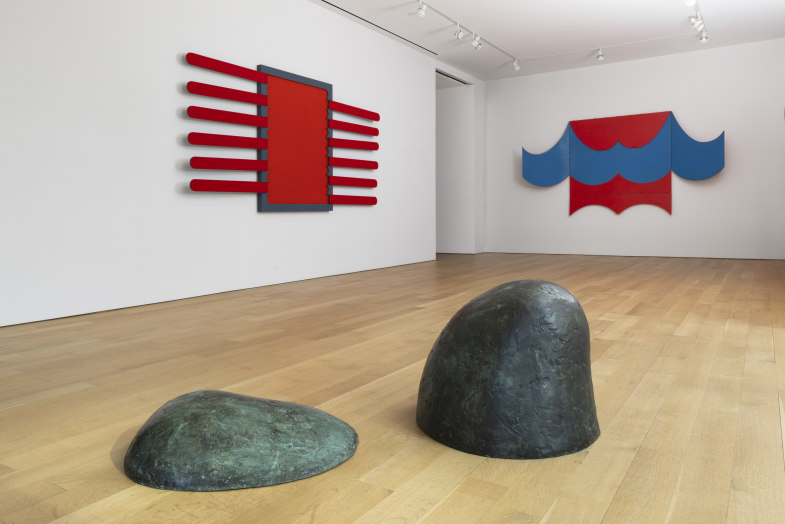Luxembourg + Co., New York, is pleased to announce the opening of Seen and Unseen: Katsumi Nakai and Isamu Noguchi.
Innovators in the field of sculpture, these two artists operated on opposite sides of the Atlantic but shared an aspiration to translate their Japanese cultural heritage into a new geographic context. Taking Noguchi’s seminal work Seen and Unseen of 1962 as a gateway to discover the work of Katsumi Nakai, the proposed display will focus on the importance of veiling and unveiling as artistic strategies that underline both of these practitioners’ work. Moreover, the display will also point towards the significance of Japanese craft traditions such as origami, interior design, and garden landscaping within this context.
American born Isamu Noguchi (1904-1988) spent most of his youth in Japan, before returning to the United States as a teenager. Having trained and studied in several institutions and artists’ studios in the States, he then travelled to Paris where he apprenticed as a sculptor with Constantin Brancusi before finally returning to New York and establishing his own studio. His point of view as a mature artist later retained the tension of his multinational identity, particularly in the aftermath of the Second World War, and came to expression in his search to reinterpret traditional motifs of Japanese craft using the language of European and North American modern art.
Katsumi Nakai (1927-2013), on his part, was a Japanese native, born in the town of Hirakata in the province of Osaka. He became an active artist in the local art scene and the leader of an artistic group named Tekkei-Kai. Nakai belongs to a generation of artists that experienced the trauma of the Second World War during their formative years as young adults training in art in Japan. His desire to travel in the aftermath of the War and explore other cultures was a direct result of this. It led him to leave Japan at the age of thirty-seven and to spend the most prolific decades of his career, between 1964 and 1996, in the city of Milan, Italy. There, Nakai abandoned an expressive painterly practice he developed over more than a decade. In its place, he began to forge a new artistic vocabulary, cutting and reassembling wooden panels using hinges to create simple monochrome paintings that open into complex and colourful three-dimensional objects.

